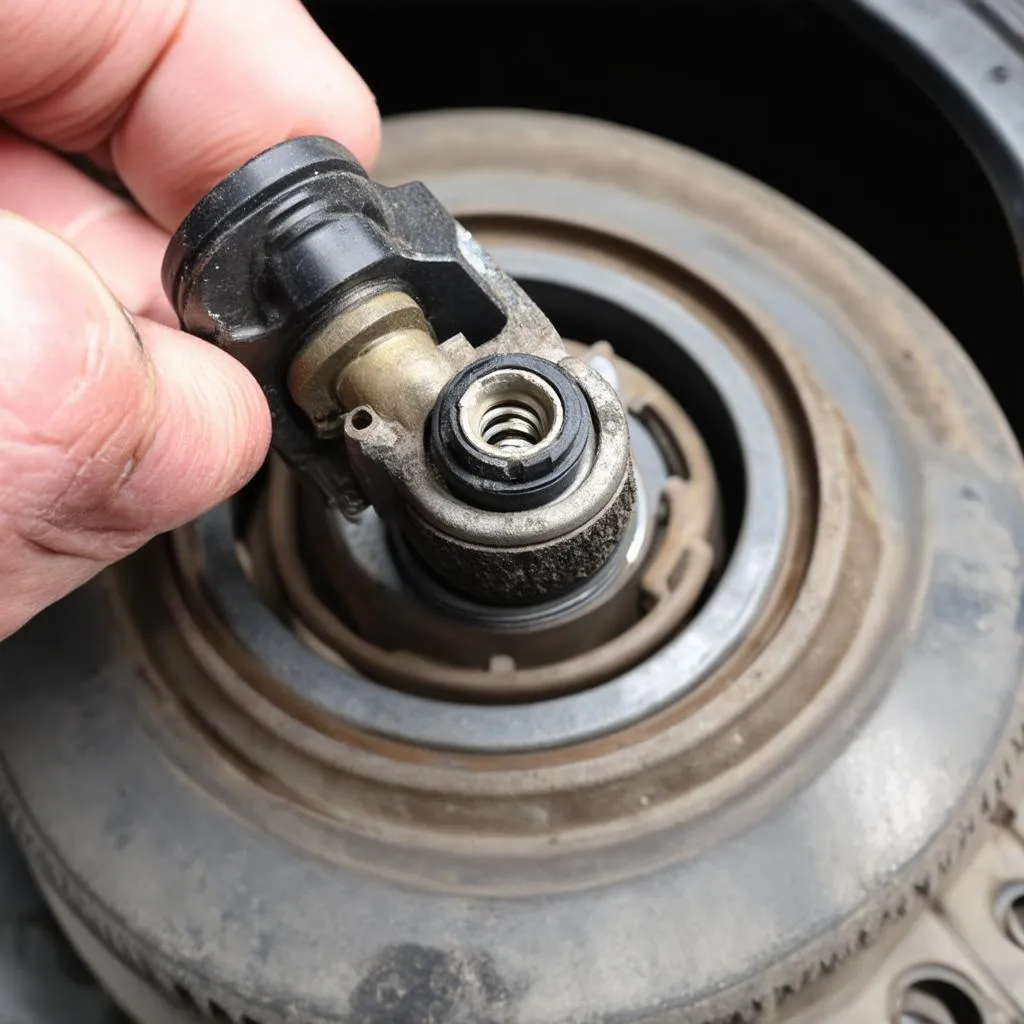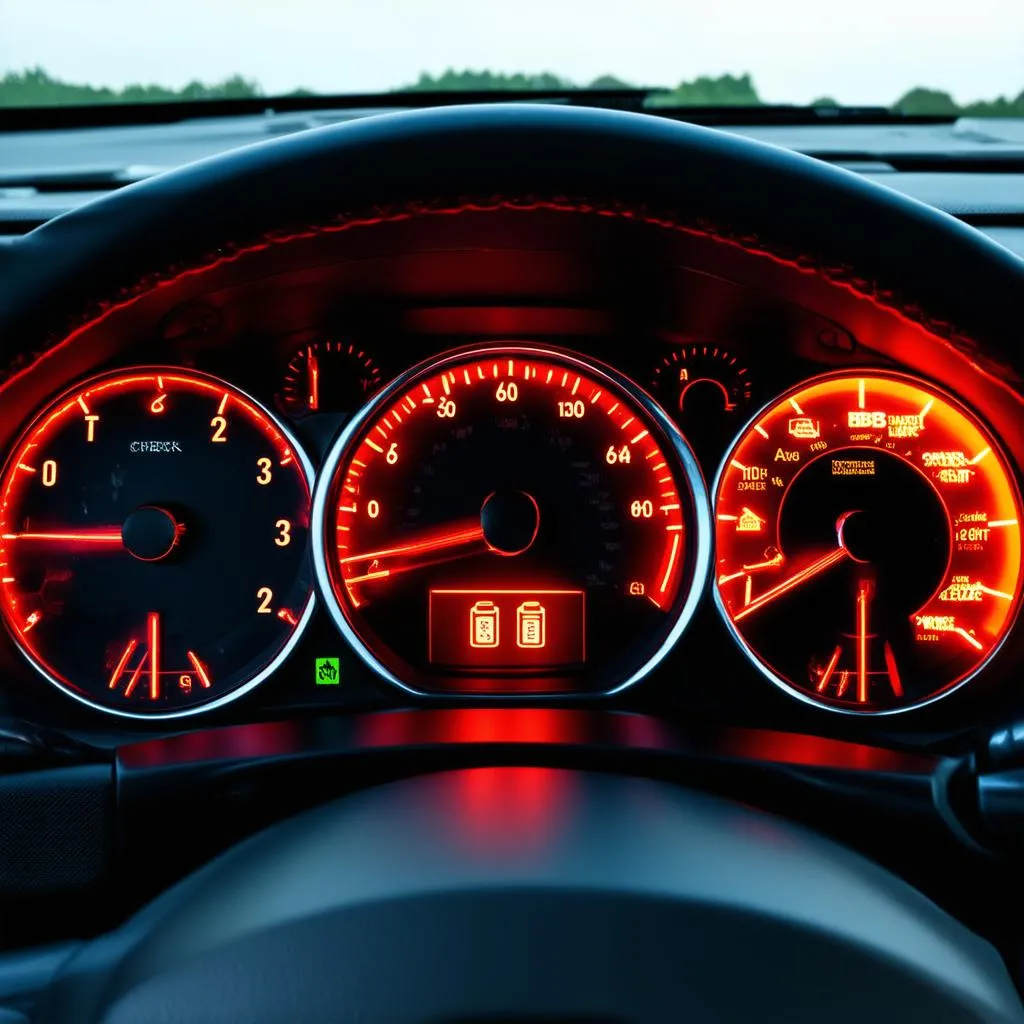Imagine this: you’re driving down a scenic California highway, the Pacific Ocean sparkling to your right. Suddenly, a yellow light on your dashboard catches your eye – the dreaded ABS light. What does it mean? Is it safe to drive? How can you get rid of it?
Don’t panic! Just like a stubborn check engine light, a glowing ABS light doesn’t necessarily mean your car is about to break down. However, it’s a signal you shouldn’t ignore. This guide will walk you through the ins and outs of the ABS light, from what triggers it to how to make it disappear.
Understanding the Dreaded ABS Light
What does the ABS Light Mean?
The ABS light is your car’s way of telling you there’s an issue with the Anti-lock Braking System (ABS). This crucial safety feature prevents your wheels from locking up during hard braking, allowing you to maintain steering control.
From a mechanic’s perspective, the ABS light is a call to action. It suggests a potential problem that needs diagnosis and repair to ensure safe braking.
Why is My ABS Light On?
Several culprits can trigger the ABS light, ranging from minor glitches to more serious problems:
- Faulty ABS Wheel Speed Sensor: These sensors, often located near the wheel hub, monitor wheel speed and relay this information to the ABS control module. A malfunctioning sensor can send incorrect data, triggering the light.
- Damaged ABS Tone Ring: The tone ring, a toothed ring attached to the wheel bearing, works in conjunction with the wheel speed sensor. If it’s damaged or dirty, it can disrupt the signal and turn on the ABS light.
- ABS Module Issues: The ABS module is the brain behind the entire system. A failing module can lead to a variety of problems, including an illuminated ABS light.
- Low Brake Fluid: Low brake fluid levels can affect the hydraulic pressure within the ABS system, potentially causing the light to illuminate.
- Blown Fuse: A blown fuse dedicated to the ABS system can interrupt the flow of electricity, leading to a malfunctioning system and a glowing warning light.
Common Questions About the ABS Light:
- Is It Safe to Drive with the ABS Light On? While you might still have regular braking ability, driving with an illuminated ABS light is not recommended. A malfunctioning ABS system compromises your ability to maintain control during emergency braking situations.
- How Do I Reset My ABS Light? The solution isn’t as simple as resetting the light. The ABS light is a warning signal, and simply resetting it won’t address the underlying issue.
- Can I Fix the ABS Light Myself? While some minor issues might be tackled with DIY fixes, diagnosing and repairing ABS problems often requires specialized tools like a dealer scanner for European cars or an Autel ABS brake bleed scanner tool, along with advanced mechanical knowledge.
Taking Action: Getting to the Root of the Problem
- Read the Trouble Codes: The first step is to identify the source of the problem. This usually involves connecting a diagnostic scanner, such as a dealer-level scanner for European cars, to your vehicle’s OBD-II port. The scanner retrieves trouble codes stored in the ABS module, providing valuable clues about the malfunction.
- Inspect the System Components: Once you’ve narrowed down the potential culprits based on the trouble codes, visually inspect the related components. For instance, check the ABS wheel speed sensors for damage, debris, or corrosion.
- Test and Repair: If a faulty component is identified, it needs to be tested and replaced. This might involve procedures like testing the ABS module, bleeding the brake lines, or replacing a damaged ABS wheel speed sensor.
 ABS Wheel Speed Sensor
ABS Wheel Speed Sensor
ABS Light Still On? Seeking Professional Help
If the ABS light persists despite your best efforts, it’s crucial to seek professional help. A qualified mechanic with experience in ABS systems can accurately diagnose and repair the issue, ensuring your vehicle’s braking system is in top condition.
Remember, ignoring the ABS light is like ignoring a flashing “danger” sign. It’s always better to err on the side of caution and address the issue promptly, ensuring your safety and the safety of others on the road.
Beyond the ABS Light: Other Important Warning Signals
While the ABS light is a crucial safety indicator, it’s not the only one. Familiarize yourself with other dashboard warning lights, such as the check engine light, brake warning light, and tire pressure monitoring system (TPMS) light. Understanding these signals can help you stay ahead of potential problems and keep your vehicle running smoothly.
 Car Dashboard Warning Lights
Car Dashboard Warning Lights
Need Help with Your ABS System?
Experiencing ABS light woes? Don’t let it put a damper on your next road trip! Contact us via WhatsApp at +84767531508 for expert guidance and support with your vehicle’s diagnostics. Our team of automotive specialists is available 24/7 to assist you with any questions or concerns you may have.
We can also assist you with installing and utilizing various diagnostic tools, including dealer-level scanners for European cars and Autel brake bleed scanners.
Keep Rolling Safely
Remember, a well-maintained car is a safe car. Regularly check your brake fluid, inspect your tires, and address any warning lights promptly. By staying proactive and informed, you can enjoy countless miles of safe and worry-free driving.
For further reading on brake system maintenance, check out these resources:
- How to Bleed a GM ABS Module Without a Scan Tool
- Exploring the Best Autel ABS Brake Bleed Scanner Tools
We’d love to hear from you! Share your thoughts, questions, or experiences with the ABS light in the comments section below. And don’t forget to check out our other informative articles on car maintenance and repair!